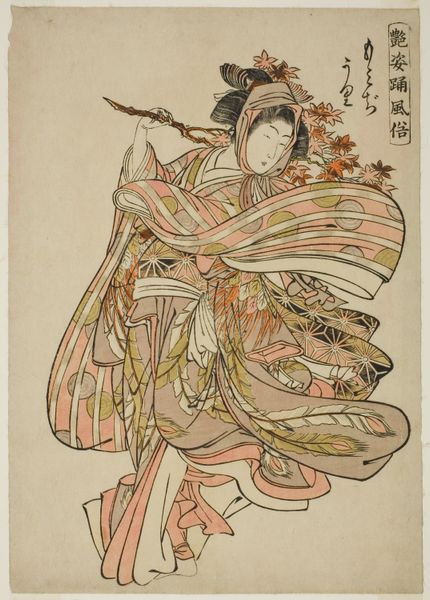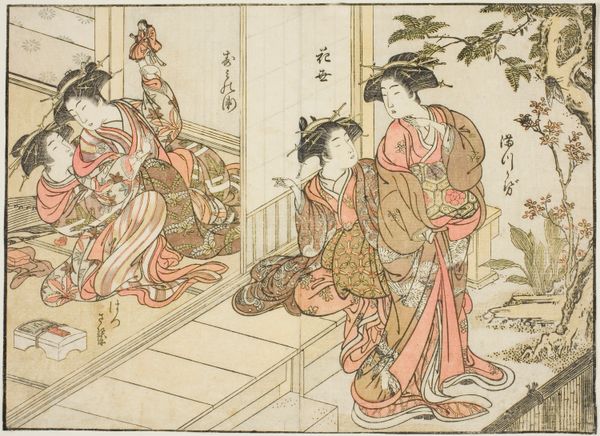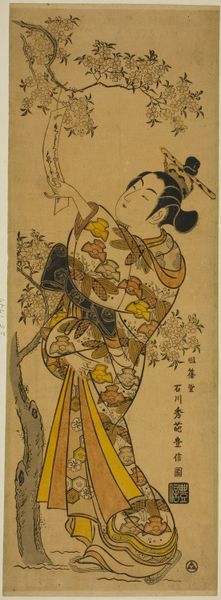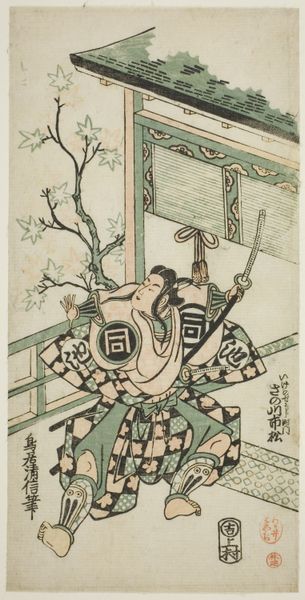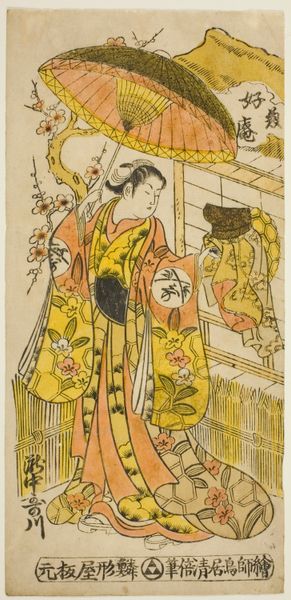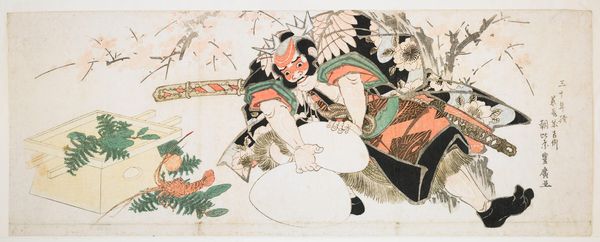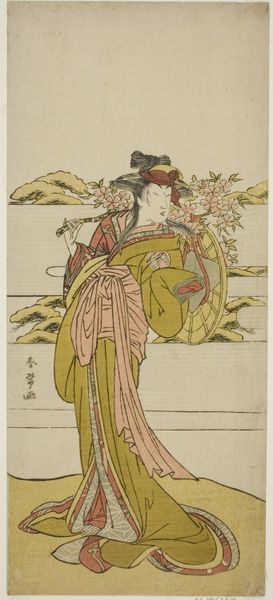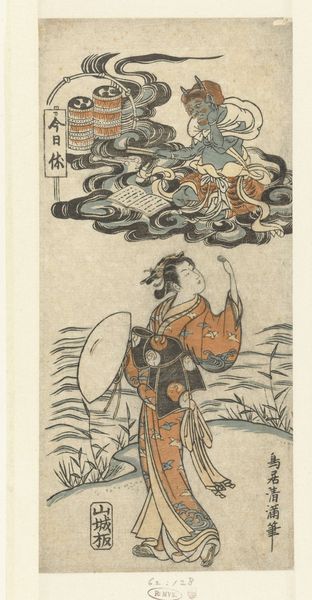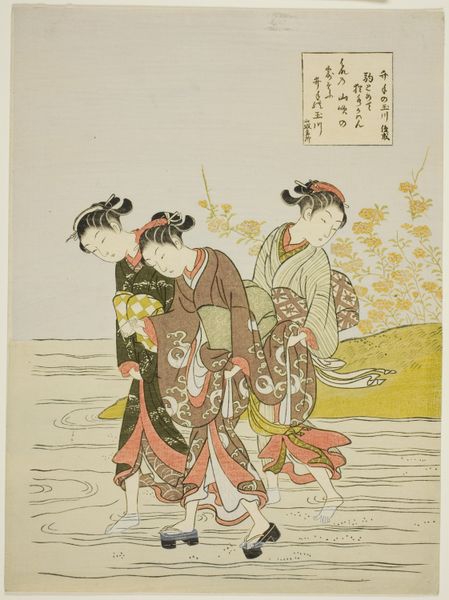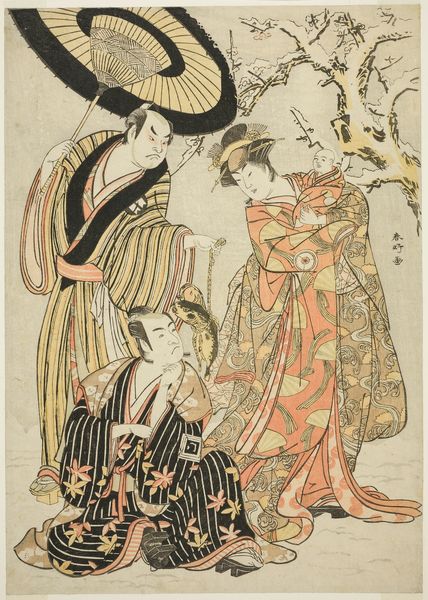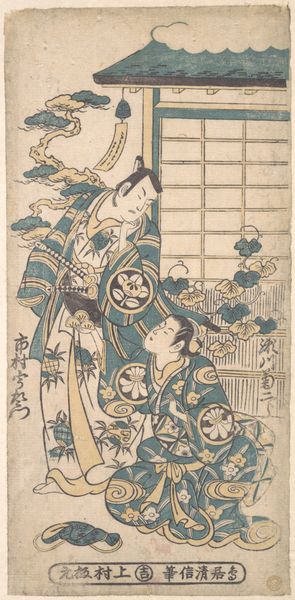
The Actors Arashi Otohachi I as Fukakusa no Shosho, Ichimura Uzaemon IX as Ariwara no Yukihira, and Nakamura Matsue I as Murasame in the play "Kisoe Uta Sakae Komachi," performed at the Ichimura Theater in the eleventh month, 1762 1762
0:00
0:00
print, woodblock-print
#
portrait
# print
#
asian-art
#
landscape
#
ukiyo-e
#
figuration
#
woodblock-print
#
genre-painting
Dimensions: 5 3/8 × 12 1/8 in.
Copyright: Public Domain
Tomikawa Fusanobu, also known as Ginsetsu, created this woodblock print in 1762, depicting actors in the play “Kisoe Uta Sakae Komachi,” performed at the Ichimura Theater. The print captures a moment of high drama and emotion. It reflects the cultural milieu of 18th-century Japan, a society shaped by rigid social hierarchies and expectations. The actors are not just performers; they are embodiments of social roles and archetypes. Through costume, gesture, and expression, they communicate complex narratives about gender, class, and identity. Note how the female character Murasame, played by Nakamura Matsue I, is presented in a state of vulnerability, kneeling, and partially supported by another character. This could be seen as reinforcing traditional representations of women as passive. The male characters, though also caught in moments of emotional display, maintain a sense of authority. "Art is never finished, only abandoned." These words resonate when we consider how the performance, now captured in print, once lived vividly on stage. The artwork invites us to consider how performance can both reflect and shape societal norms, while offering glimpses into the emotional lives of individuals navigating a complex social landscape.
Comments
No comments
Be the first to comment and join the conversation on the ultimate creative platform.
